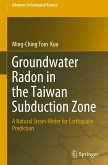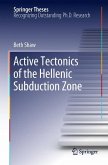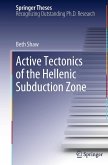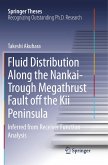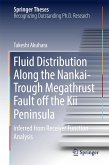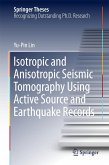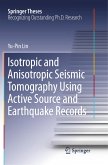This book presents the mechanism of in-situ radon volatilization and outlines the geological requisites to site a radon monitoring well for earthquake warning. A small fractured aquifer under undrained conditions is an effective natural strain meter for earthquake prediction. It shows significant merit on a local basis, and most importantly, the analysis can also be applied globally in subduction zones with similar tectonic settings and physical-chemical relationships.
Between 2003 and 2010, anomalous declines in groundwater radon concentration were recurrently recorded at Antung, Taiwan, which are considered as precursory to local major earthquakes. The correlations between radon decline and earthquake magnitude are useful for early warning of local main earthquakes.
The book consists of 7 chapters. Chapter 1 presents background information and the objectives of the book. Chapter 2 illustrates the methods of monitoring groundwater radon and a brief review of earthquake prediction research using groundwater radon. Chapter 3 provides the details of anomalous decrease in groundwater radon before the Taiwan Mw 6.8 Chengkung Earthquake of 2003. Chapter 4 provides the description of the mechanism of groundwater-radon volatilization. Chapter 5 shows the recurrent anomalous declines in groundwater radon concentration consistently recorded at Antung, Taiwan, prior to local main earthquakes that occurred between 2003 and 2010. Monitoring groundwater radon in small, unconfined fractured aquifers is explained in Chapter 6, followed by an analysis of correlating precursory declines in groundwater radon, precursory time with earthquake magnitudes for small, confined fractured aquifers in Chapter 7.
Between 2003 and 2010, anomalous declines in groundwater radon concentration were recurrently recorded at Antung, Taiwan, which are considered as precursory to local major earthquakes. The correlations between radon decline and earthquake magnitude are useful for early warning of local main earthquakes.
The book consists of 7 chapters. Chapter 1 presents background information and the objectives of the book. Chapter 2 illustrates the methods of monitoring groundwater radon and a brief review of earthquake prediction research using groundwater radon. Chapter 3 provides the details of anomalous decrease in groundwater radon before the Taiwan Mw 6.8 Chengkung Earthquake of 2003. Chapter 4 provides the description of the mechanism of groundwater-radon volatilization. Chapter 5 shows the recurrent anomalous declines in groundwater radon concentration consistently recorded at Antung, Taiwan, prior to local main earthquakes that occurred between 2003 and 2010. Monitoring groundwater radon in small, unconfined fractured aquifers is explained in Chapter 6, followed by an analysis of correlating precursory declines in groundwater radon, precursory time with earthquake magnitudes for small, confined fractured aquifers in Chapter 7.


